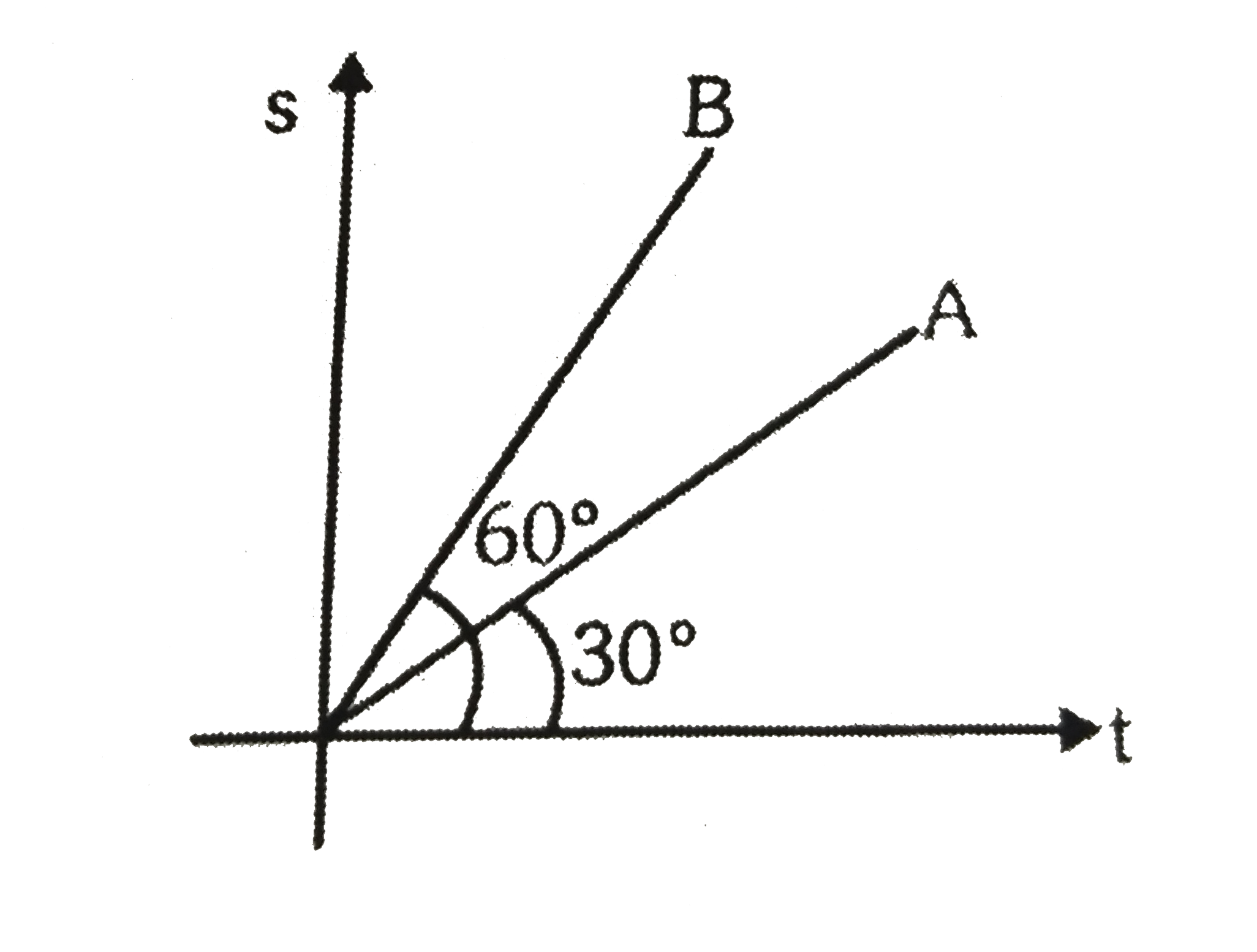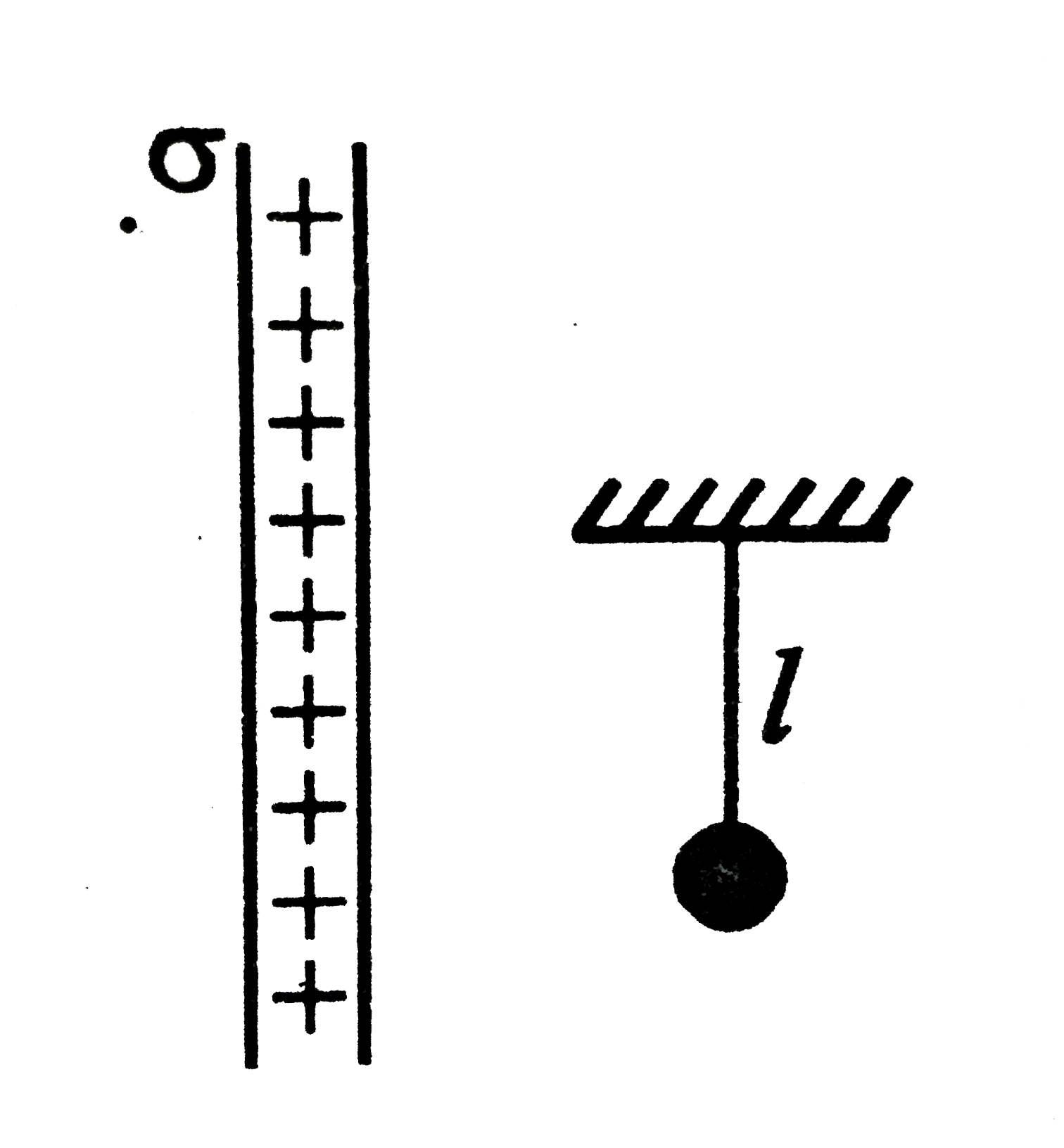A car is moving with speed u. Driver of the car sees red traffic light. His reaction time is t, then find out the distance travelled by the car after the instant when the driver decided to apply brakes. Assume uniform retardation 'a' after applying brakes. Solution in Gujrati
During the reaction time, the car will move with constant speed.
So, S1=ut
The distance covered by the car after brakes are applied S2=02−u2−2a=u22a
So Total distance travelled = S1+S2=ut+u22a
Topper's Solved these Questions
- KINEMATICS (MOTION ALONG A STRAIGHT LINE AND MOTION IN A PLANE)BOOK - ALLEN CHAPTER - KINEMATICS (MOTION ALONG A STRAIGHT LINE AND MOTION IN A PLANE)EXERCISE - BEGINNER S BOX-5
5 Videos
- KINEMATICS (MOTION ALONG A STRAIGHT LINE AND MOTION IN A PLANE)BOOK - ALLEN CHAPTER - KINEMATICS (MOTION ALONG A STRAIGHT LINE AND MOTION IN A PLANE)EXERCISE - BEGINNER S BOX-6
9 Videos
- KINEMATICS (MOTION ALONG A STRAIGHT LINE AND MOTION IN A PLANE)BOOK - ALLEN CHAPTER - KINEMATICS (MOTION ALONG A STRAIGHT LINE AND MOTION IN A PLANE)EXERCISE - BEGINNER S BOX-3
2 Videos
- KINEMATICSBOOK - ALLEN CHAPTER - KINEMATICSEXERCISE - EXERCISE-2
89 Videos
- MISCELLANEOUSBOOK - ALLEN CHAPTER - MISCELLANEOUSEXERCISE - Question
1 Videos
Similar Questions
s-t graph of two particles A and B are shown in fig. Find the ratio of velocity of A to velocity of B.

View SolutionA particle is projected vertically upwards from ground with velocity 10 m/s. Find the time taken by it to reach at the highest point ?
View SolutionA particle is moving along a circuilar path of radius 5m. And with uniform speed 5 m/s. What will be the average acceleration when the particle completes half revolution:-
View SolutionA student performs an experiment to determine how the range of a ball depends on the velocity with which it is projected. The "range" is the distance between the points where the ball lends and from where it was projected, assuming it lands at the same height from which it was projected. It each trial, the student uses the same baseball, and launches it at the same angle. Table shows the experimental results.
∣∣ ∣ ∣ ∣ ∣ ∣∣TrailLaunch speed(m/s)Range(m)110822031.833070.7440122.5∣∣ ∣ ∣ ∣ ∣ ∣∣
Based on this data, the student then hypothesizes that the range, R, depends on the initial speed v0 according to the following equation : R=Cvn0, where C is a constant and n is another constant.
Based on this data, the best guess for the value of n is :-
View SolutionA simple pendulum of length l and bob mass m is hanging in front of a large nonconducting sheet having surface charge density σ. If suddenly a charge +q is given to the bob & it is released from the position shown in figure. Find the maximum angle through which the string is deflected from vertical .
 .
.
View SolutionA driver takes 0.20 s to apply the brakes after he sees a need for it. This is called the reaction time of the driver. If he ils driving a car at a speed of 54 km/h and the brakes cause a deceleration of 6.0ms2, find the distance travelled by the car after he sees the need to put the brakes on.
View SolutionWhen a car driver travelling at a speed of 10 m/s applies brakes and brings the car to rest in 20 s, then retardation will be :
View SolutionA car is moving with speed u. Driver of the car sees red traffic light. His reaction time is t, then find out the distance travelled by the car after the instant when the driver decided to apply brakes. Assume uniform retardation 'a' after applying brakes.
View SolutionA car moving with speed v on a straight road can be stopped with in distance d on applying brakes. If same car is moving with speed 3v and brakes provide half retardation, then car will stop after travelling distance
View SolutionA car is moving with speed u. Driver of the car sees red traffic light. His reaction time is t, then find out the distance travelled by the car after the instant when the driver decided to apply brakes. Assume uniform retardation 'a' after applying brakes.
View SolutionA car is moving with a constant accelaration of 4m/s2. On seeing a person infront of it the driver suddenly applies a brake . IF the car is moving with a velolcity of 20m/s at the moment when driver sees the person and the reaction time of the driver is 2s, then the distance it travels after the movement it sees the person and the just before applying the break is
View SolutionWhen a car driver travelling at a speed of 10 m/s applies brakes and brings the car to rest in 20 s, then the retardation will be:
View Solution90km/h के वेग से चलती हुई कार में ब्रेक लगाने के बाद 10 sec के बाद कार रुक जाती है। ब्रेक लगाने के कारण कार में उत्पन्न मंदन का मान एवं कार द्वारा तय की गई दूरी ज्ञात करें।
View Solutionएक कार u वेग से गतिमान है। चालक ट्रेफिक सिग्नल को देखकर ब्रेक लगाकर a मंदन आरोपित करता है तो वीरामवस्था में आने से पूर्व कार द्वारा तय की गई दूरी ज्ञात कीजिए। (ड़्राइवर का प्रतिक्रिया समय है)
View SolutionA driver takes 0.20 s to apply the brakes after he sees a need for it. This is called the reaction time of the driver. If he ils driving a car at a speed of 54 km/h and the brakes cause a deceleration of 6.0ms2, find the distance travelled by the car after he sees the need to put the brakes on.
View SolutionIf the driver of a car moving at a speed of 10 m / s sees the red light and applies the brake, the car stops after traveling a distance of 10 m. If the same car moved at a speed of 20 m / s, then after the driver applied brakes, it stopped for a distance of 30 m. If the car is moving at a speed of 15 m / s then how much distance will it stop after applying the brakes? Let it be assumed that the rate of decrease of time and velocity is the same in every action.
View Solution
